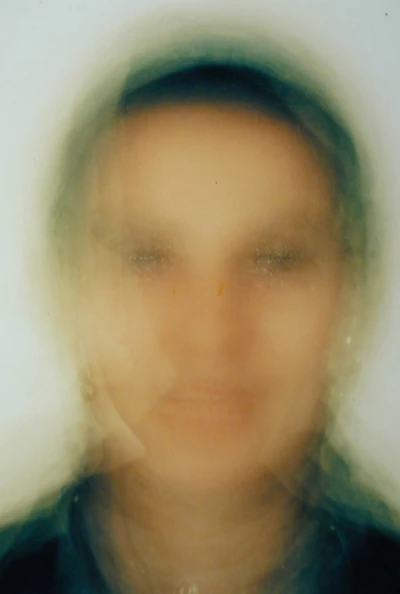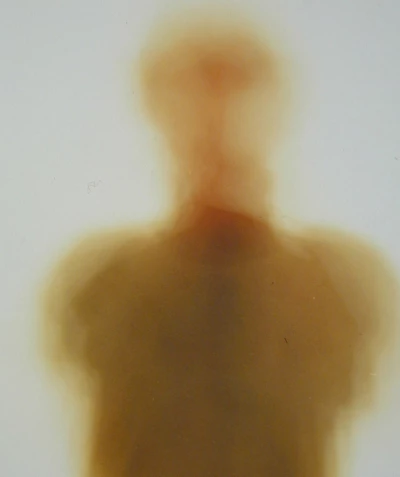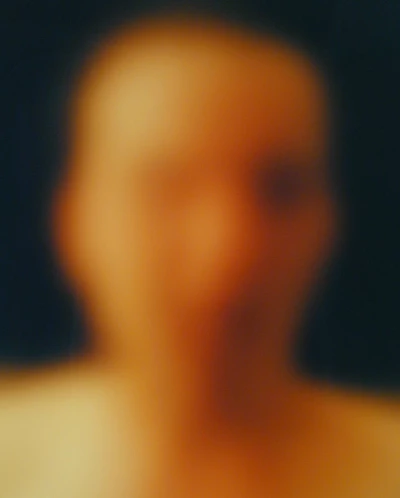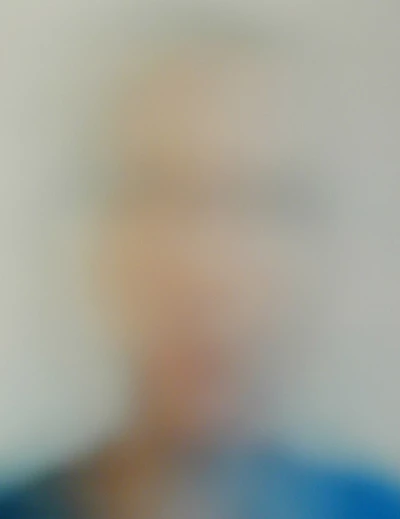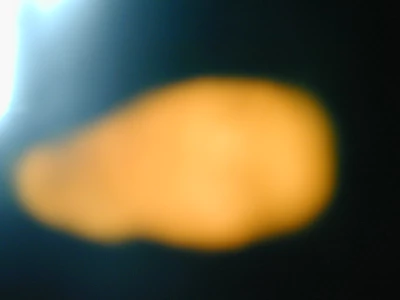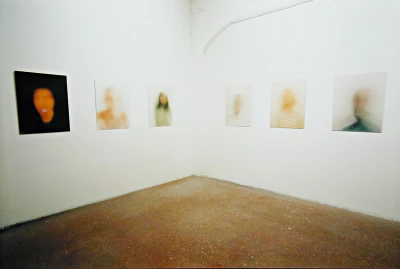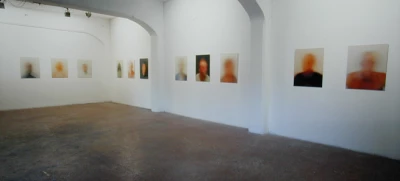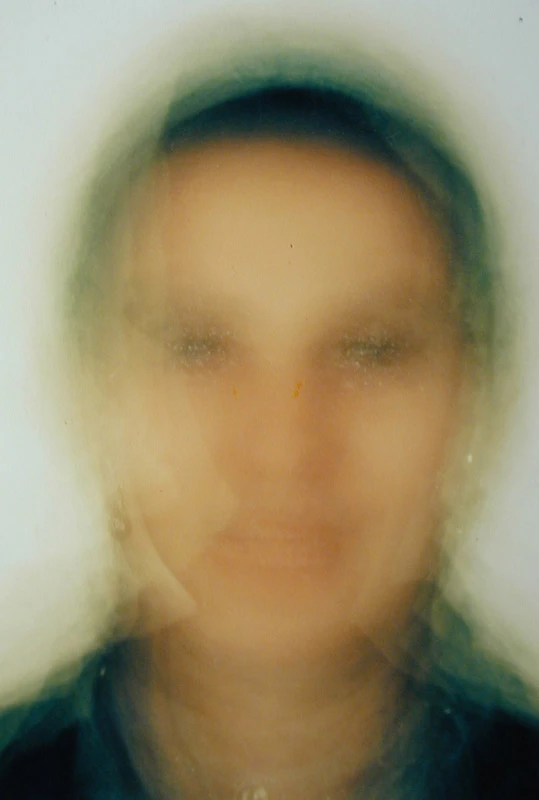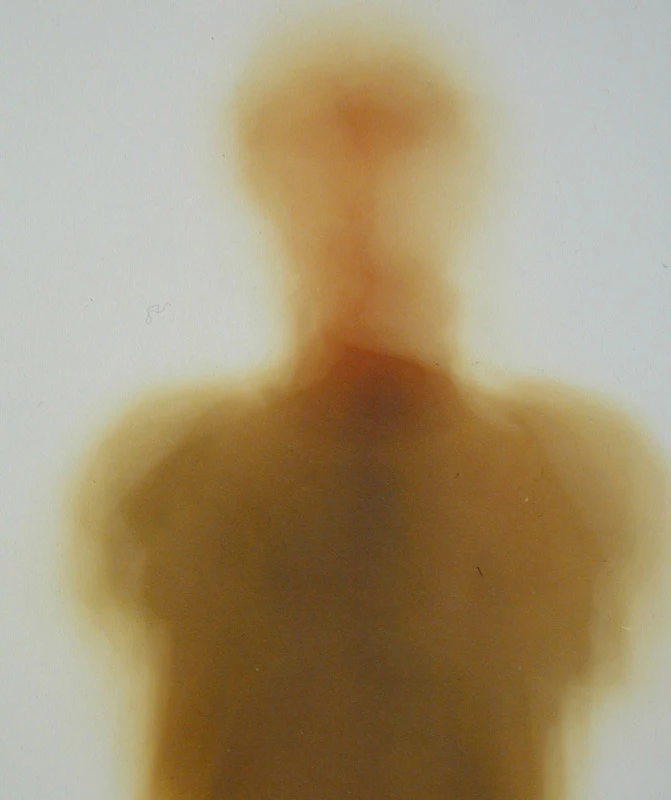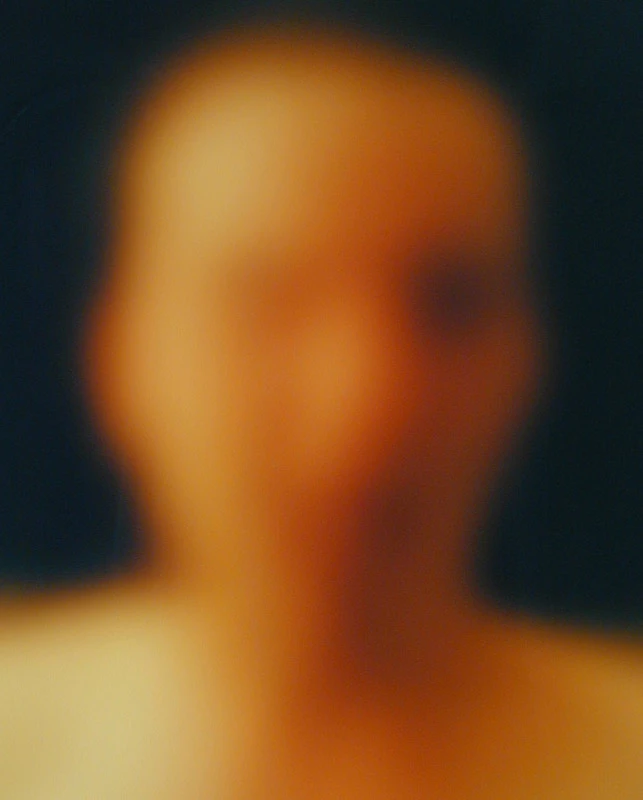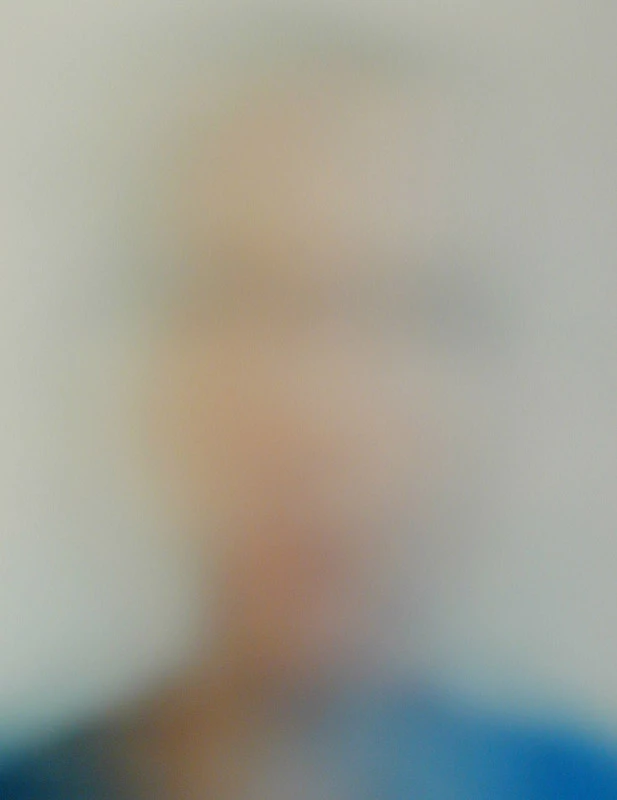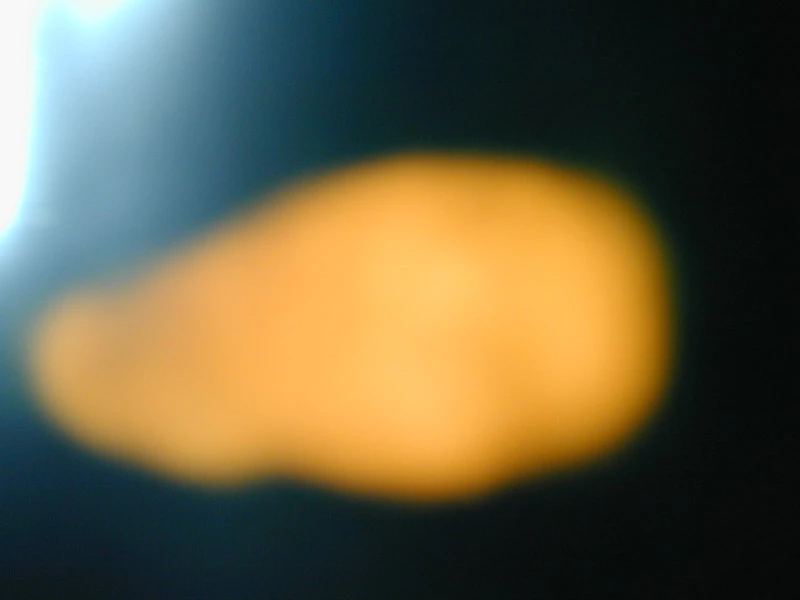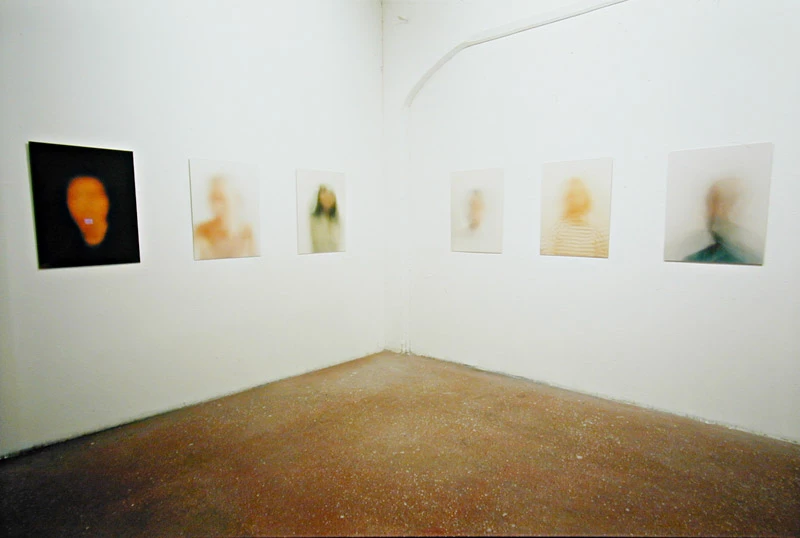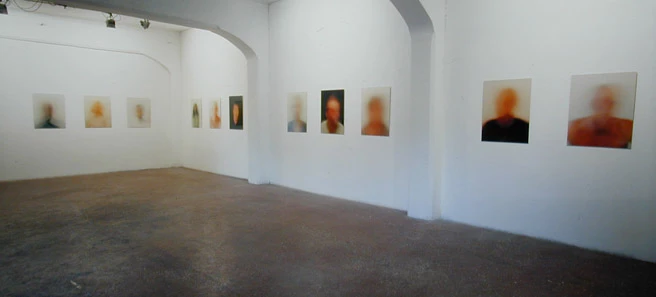Segni di identità + Videostadio
Curated by Emanuela De Cecco
Solo show by Guido Anderloni + video by Paola di Bello
19.10.1997 - 09.11.1997
How to describe traces of unrecognizable faces, flesh-colored evanescent silhouettes, ghosts born that way because of time.
He says he doesn’t like defining details... Guido Anderloni would like these images to become personal photos suitable for all the passports of the world; he’d like to checkmate the inevitably discriminatory rules that the game of representation enacts.
Here it is: the (intentional) absence of details escapes the inevitable violence of cataloguing and opens up to a shared subjectivity, where one finds oneself practicing a new form of collective identification.
All that can be perceived (all that can be sought) are in fact silent presences that tell no other stories than those the viewer wishes to hear.
A space opens up that the image, overloaded with details, usually denies in the face of its own evidence. Violence and joy in what at first glance may appear to be the delicate work of a remorseful photographer are revealed through an attitude that amplifies the degree of reality.
From voyeur to witness, the lens of his camera listens patiently, it does not look... It refrains from snatching the perfect shot, it tolerates and embraces what the scene of the main set does not foresee—there is often a precise selection even in documentaries.
By removing recognizability from his portraits, Guido Anderloni draws us in; these faces, in their indefiniteness and in being stripped of individual identity, are almost thinkable as mirrors—theirs is a possible form in which we may recognize ourselves. They seem to come from afar and to be there to remind us of the existential precariousness in which we are immersed—us, more than subjects, signs of a composite and uncertain identity, subject to constant transformation over time. Science says that thanks to cellular turnover, everything in our body is destined for the inexorable law of replacement. Except the brain.
Given these premises, it’s no coincidence that the next step is a work of which a discreet trace is on view at Careof, in which the artist reworks his personal version of the representation of violence. I’m referring to 103 africani, a work in which Anderloni asked the guests at his exhibition Señas de Identidad last spring to pass, in order to reach the buffet, through a gallery room where a photograph is taken (with portraits superimposed to create a unique result) and a small initiation mark is stamped on their hand... 103 people, in reference to an ordinary news item that appeared in a Spanish newspaper, recounting the story of an equal number of undocumented immigrants deported from Spain to Africa using a powerful sleeping drug to avoid complications during the transfer.
History enters, undermining any possibility of finding safe refuge in the tradition of the genre, and this shift seems to find a clear reference in Hal Foster’s definition of the post-traumatic subject—a subject who returns as a survivor or witness, who simultaneously affirms and denies his identity by sublimating it.
Violence, evoked through a non-didactic process, far from blood, guts, and crime scenes, thus takes on a dark connotation, even more violent and universal in the absence of details and in the replacement of the victim’s body with the real body of the viewer, who becomes available to play the role assigned to them. As if to say that we can no longer truly consider what we see as something that does not belong to us, that we can pretend not to have seen it, not to have known.
Emanuela De Cecco, October 1997
In the video room, Careof presents Videostadio by Paola di Bello.
